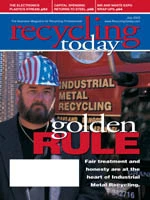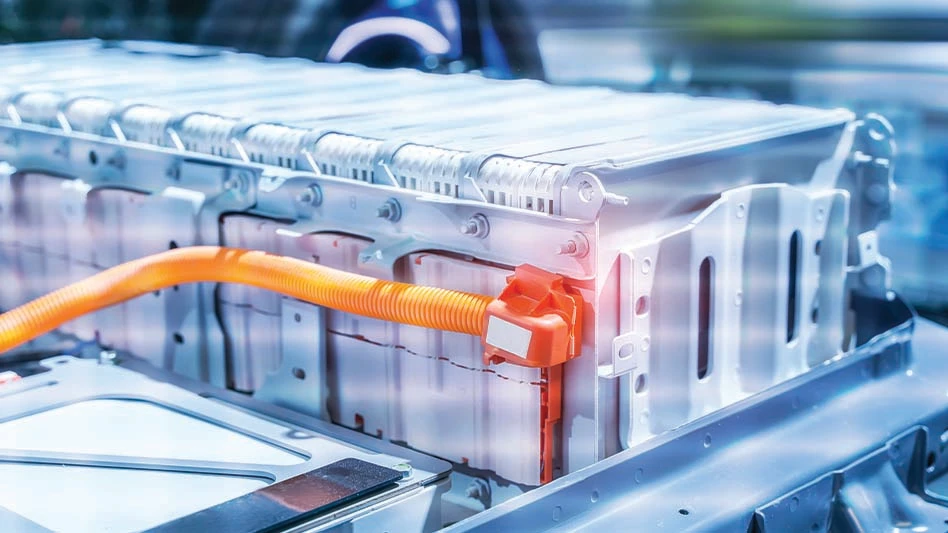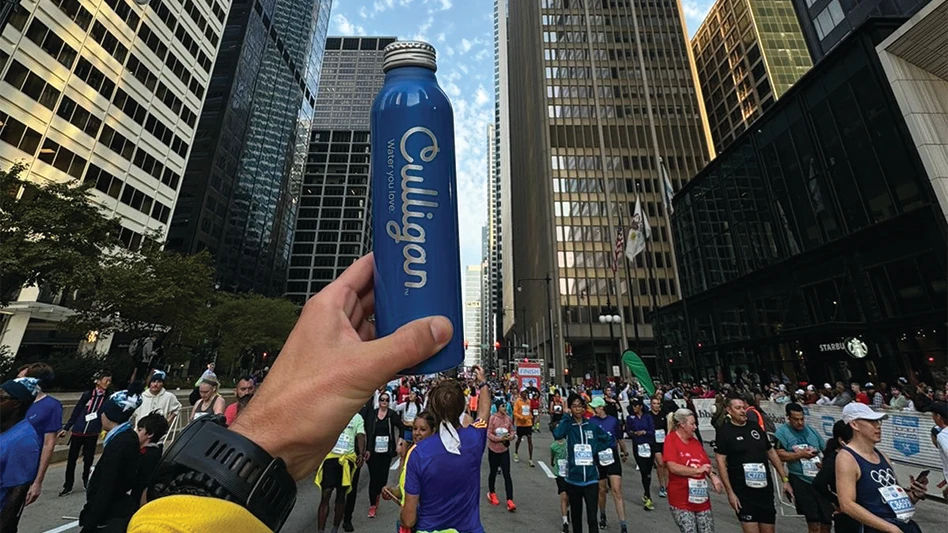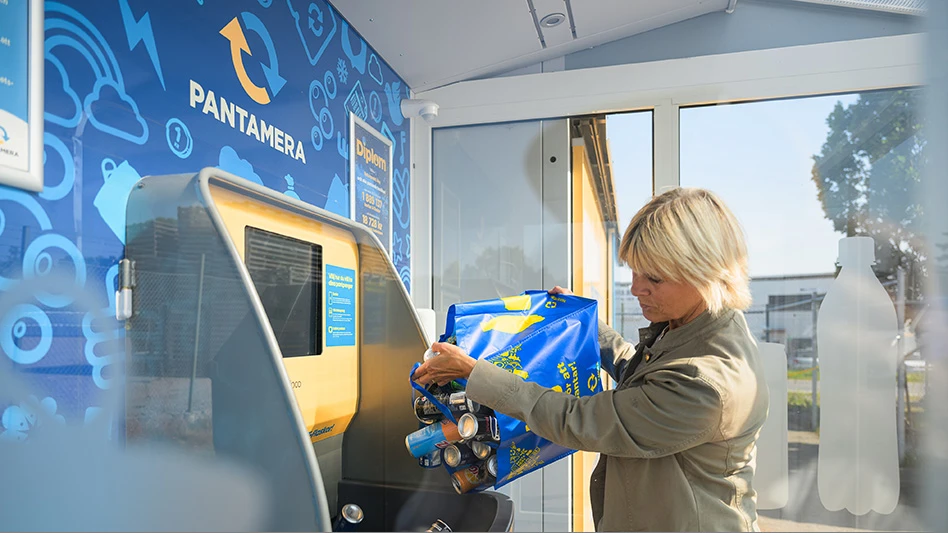With compliance deadlines having arrived for the secondary aluminum industry, the Aluminum Association and its members have reached agreement with the United States Environmental Protection Agency (EPA) for a series of extensive improvements to the secondary aluminum air toxics control standards.
These improvements result in much more workable compliance deadline requirements and will add considerable flexibility to allow the installation of cost-effective controls for meeting the emission limits.
EPA promulgated the final rule for secondary aluminum maximum achievable control technology (MACT) requirements in March 2000, following an extended period of emission testing and regulatory development with the Aluminum Association and its members.
Although much improved over the proposed rule, the final rule still contained serious problems for compliance deadlines, and lacked sufficient flexibility for many facilities to cost-effectively meet the standards and demonstrate compliance.
As a result, the Association and its members filed suit against EPA and subsequently entered into protracted negotiations with the agency from the spring of 2000 until December 2001 in an attempt to settle the issues and improve the standards. The revised rules that resulted from the negotiations include two categories of changes: compliance deadline-related revisions, and revisions that add flexibility for compliance.
COMPLIANCE REVISIONS. Under the revised rulemaking published on Sept. 24, 2002, the final compliance deadline for the rule remained March 23, 2003. However, facilities were no longer required to comply as soon as they had completed performance testing of emission control measures, but instead must comply by the final compliance deadline.
In addition, facilities had to submit finalized plans for operating, maintenance and monitoring (OM&M) provisions by March 2003, not earlier. This eliminated the conundrum of having to comply immediately upon completing performance testing, but without having established compliance performance parameters in an approved OM&M plan.
As a part of its settlement agreement with the Association, the EPA agreed to publish a final rule in December 2002 containing a number of revisions that made the rule more flexible and cost-effective. The changes gave facilities an opportunity to employ a broader range of control options to meet the emission limits established in March 2000 and to achieve compliance in a more cost-effective manner. Several of the most significant changes are noted below.
• COMMON DUCTING OF CONTROL REQUIREMENTS—Revisions to the rule include an opt-in provision to allow facilities to combine certain existing and new emission units together for common emission control. It improves the cost-benefit of controls and can reduce chlorine use, reduce emissions, and improve fluxing efficiency. One example would be the addition of a new in-line degassing/fluxing box downstream of an existing melting furnace with the objective of reducing furnace fluxing.
Under the original rule, separate emission controls would have been required for the existing furnace and new in-line flux box, creating a disincentive for better chlorine utilization. With the proposed opt-in provision, the existing furnace can be re-designated as a new source and included in a single new "secondary aluminum processing unit" (or SAPU) with the new in-line flux box.
Both the furnace and the flux box can be controlled with the same control device, resulting in cost savings and an overall reduction in emissions compared to in-furnace fluxing. As a result, the installation of in-line fluxers can decrease emissions, encourage more efficient chlorine use and reduce compliance costs.
A second example of the flexibility afforded under the revisions is the ability to use a single device to control a subset of furnaces and in-line fluxers within an existing group of sources.
By re-designating all of the furnaces and fluxers controlled by this baghouse as a "new source SAPU," compliance can be demonstrated by testing the baghouse stack and using the "SAPU" emission averaging equation to establish the stack emissions limit. This makes it easier and more straightforward to demonstrate compliance, and encourages more efficient common controls.
Common ducting is also encouraged in other revisions to the rule. For example, the revised rule would allow emissions controls to be combined for a furnace and a delacquerer. With appropriate monitoring of the emission stream from each source, a facility is now allowed to commonly duct the emissions to a control device as long as each source is demonstrated to be in compliance. This allows the optimization of control equipment for multiple emission sources so that facilities can lower their compliance costs while meeting the emission limits.
• UNVENTED DEGASSING UNITS—The revised rule also promises to eliminate unnecessary performance testing on unvented degassing units that limit chlorine flux usage. Unvented degassing units are state-of-the-art technology for reducing chlorine use-rates. Under the revised rule, unvented degassing units are considered to be in compliance with both hydrogen chloride and particulate emission limits if chlorine use is at or below 0.01 pound per ton of metal. Prior to the revision of the rule, facilities would have been required to test particulate emissions from all unvented units. This testing would have been extremely costly and a strong disincentive to facilities wishing to improve degassing efficiency.
• REPRESENTATIVE PERFORMANCE TESTING—The revised rule will allow a facility to perform emission testing of one furnace, under conditions approved by the permit authority, as representative of the emissions from a battery of similar furnaces in the facility. This provision will vastly reduce emission-testing costs in many facilities.
• ALTERNATIVE MONITORING PROVISIONS—Although the original March 2000 rule allowed facilities to seek approval of alternative monitoring scenarios in lieu of the specified requirements to demonstrate compliance, it required facilities to prove that the specified monitoring was economically and technically infeasible. Under the revisions, facilities can seek approval for alternative monitoring that fully demonstrates compliance for fluxing and lime injection operations without regard to the technical or economic feasibility of the procedure specified in the rule. For many operations, more simplified and economical means can now be adopted to monitor compliance at greatly reduced cost.
The impact of the revisions to the secondary aluminum MACT rule resulted in the savings of many thousands of dollars in compliance costs, while further reducing toxics emissions and chlorine fluxing rates. EPA estimated in the March 2000 rule that the MACT requirements would reduce toxic emissions nationally from secondary aluminum facilities by up to 79 percent. Revisions to the rule may result in greater emission reductions through improved incentives to move fluxing operations from melting furnaces by installing more efficient in-line fluxing and degassing units.
This article appears courtesy of The Aluminum Association, Washington, and first appeared in the association’s Aluminum Now magazine. The author is VP of Environment, Health and Safety with theh association.
Get curated news on YOUR industry.
Enter your email to receive our newsletters.

Explore the July 2003 Issue
Check out more from this issue and find your next story to read.
Latest from Recycling Today
- Nucor expects slimmer profits in early 2025
- CP Group announces new senior vice president
- APR publishes Design Guide in French
- AmSty recorded first sales of PolyRenew Styrene in 2024
- PRE says EU’s plastic recycling industry at a breaking point
- Call2Recycle Canada, Staples Professional expand partnership
- Circular Services breaks ground on north Texas MRF
- Tariff uncertainty results in choppy nonferrous scrap flows






